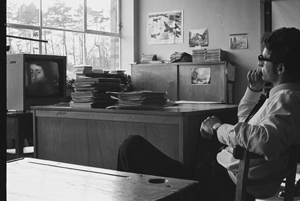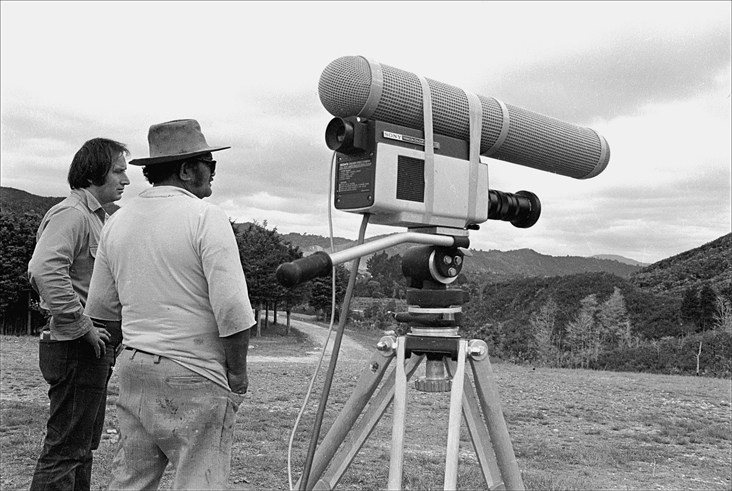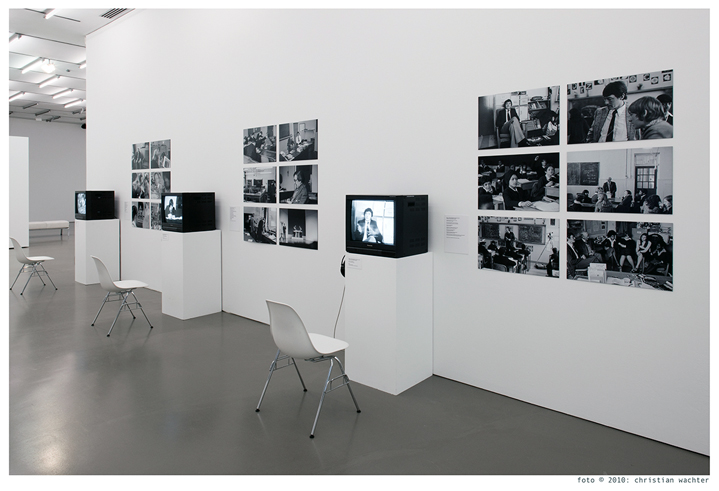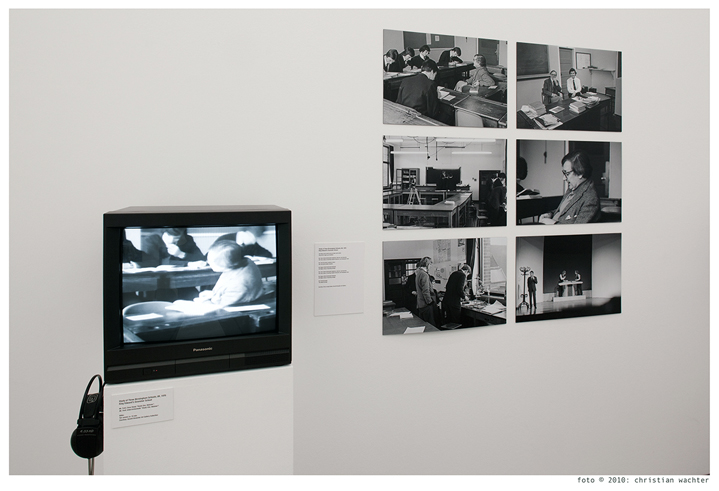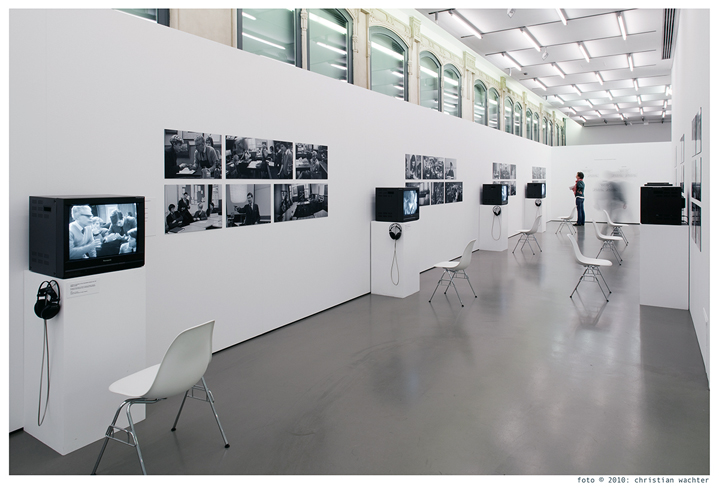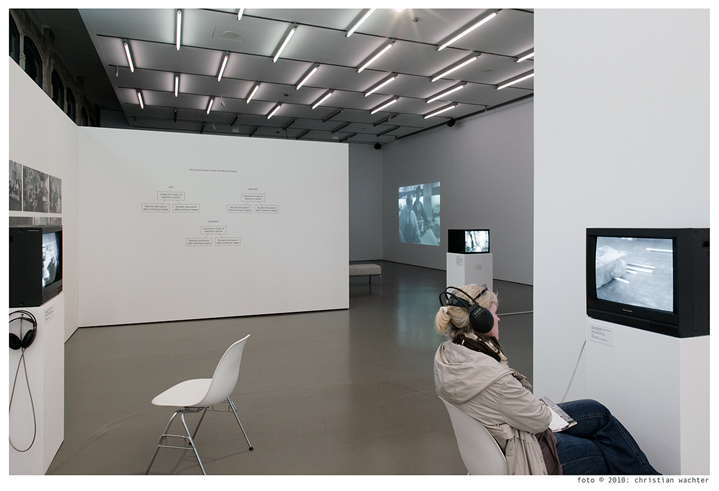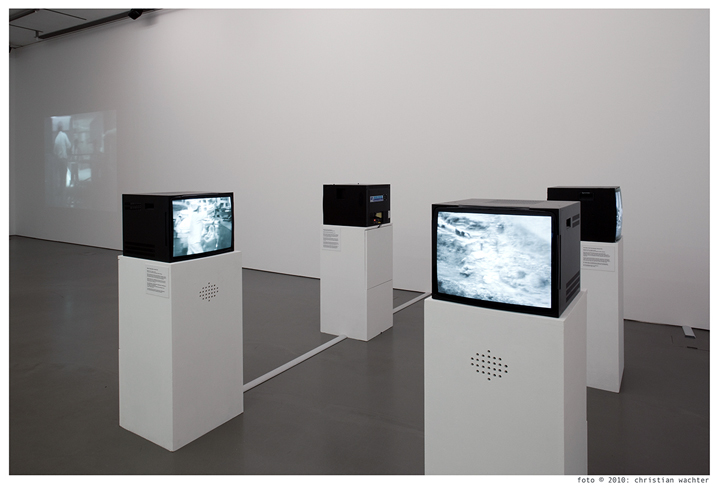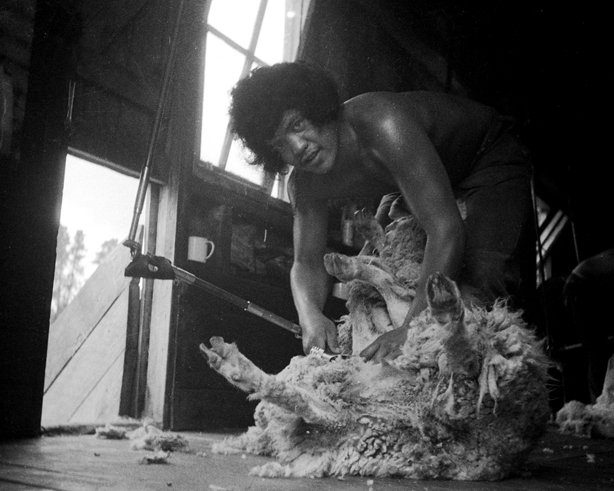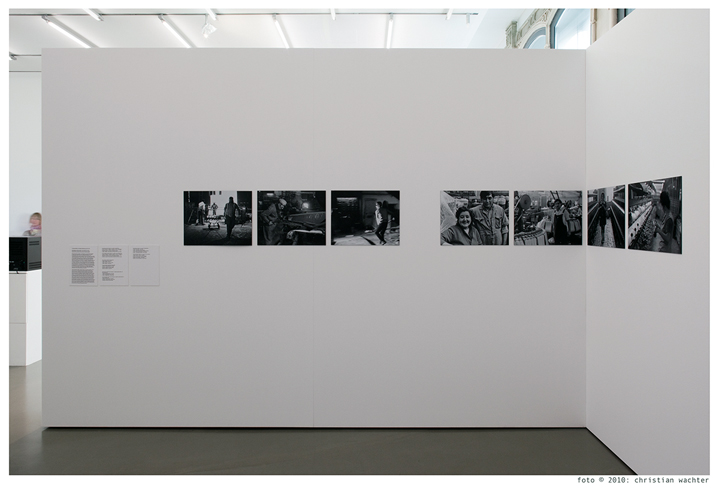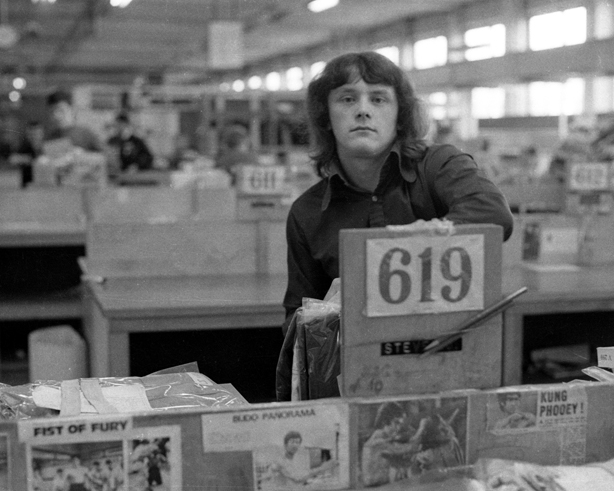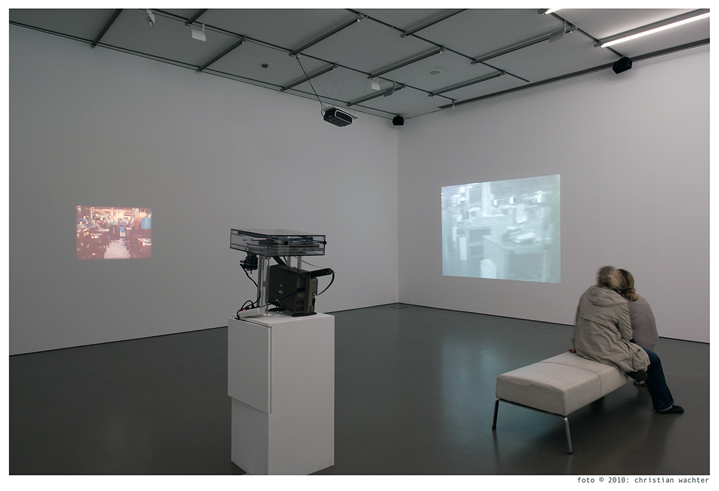Darcy Lange
Infos
Duration
17.4.2010 – 27.6.2010
Opening
16.4.2010, 6 pm
Lecture in the forefront of the exhibition
15.4.2010, 6 pm
Mercedes Vicente
“Darcy Lange: Beyond Observation”
Location: Space04, Kunsthaus Graz
Entrance free!
Darcy Lange
The exhibition is curated by Mercedes Vicente and presented in collaboration with Govett-Brewster Art Gallery, New Plymouth, with the kind support of the Darcy Lange Estate and the New Zealand Film Archive, Wellington.
Intro
In 1971 Darcy Lange abandoned his formal education and early career as sculptor and took on the media of film, photography and video, continuously exploring througout the 1970s the issue of labour in Britain, New Zealand and Spain. While his contemporaries explored video conceptually, Lange stressed the “responsibility to keep questioning the nature and power of realism”. His meditation and engagement with the workmen as subject and work as an activity was encouraged by his seminal style of real-time, unedited, unmediated, long observations of people at work that came to characterise his “Work Studies” series (1972 – 1977). He aimed to “convey the image of work as work, as an occupation, as an activity, as creativity and as a time consumer”.
Read more →Darcy Lange
In 1971 Darcy Lange abandoned his formal education and early career as sculptor and took on the media of film, photography and video, continuously exploring througout the 1970s the issue of labour in Britain, New Zealand and Spain. While his contemporaries explored video conceptually, Lange stressed the “responsibility to keep questioning the nature and power of realism”. His meditation and engagement with the workmen as subject and work as an activity was encouraged by his seminal style of real-time, unedited, unmediated, long observations of people at work that came to characterise his “Work Studies” series (1972 – 1977). He aimed to “convey the image of work as work, as an occupation, as an activity, as creativity and as a time consumer”.
In “A Documentation of Bradford Working Life” (1974), Lange experimented with the structural possibilities of both moving and still images and sought for ways of depicting his subject by devising a structure for comparative analysis. He selected four factories in Bradford (which he termed “situations”) and in each of them recorded three to five workmen (which he termed “studies”). Each of the 15 studies was then recorded by video takes of 10 minutes each, two takes of 16mm film (of the first and last half-minute of the videotaped study), and still photographs. Film, video, and photography were shot simultaneously and shared the same composition, using different camera and sound techniques adapted to the rhythm of the work of each subject.
Lange’s engagement with the subject aspired to break down or make transparent any hierarchies. The capacity for early portable video to provide live and taped feedback – unlike film or photography – meant it could serve as a medium for criticism and analysis, and a catalyst for social change. This becomes the central focus in the series “Work Studies in Schools” (1976 – 1977). In these series, Lange carefully chose institutions that would represent different social classes and selected the participating teachers on the basis of the teaching of art, history and science. He videotaped the teachers at work and then the teachers and pupils reactions to his recordings, becoming themselves an intrinsic part of the document. With these works, Lange sought to effect change for his subjects, introducing a radical potential for social transformation by inviting them to become critical viewers.
In the late 1970s, Lange aligned himself with Māori activists’ struggles to establish land rights in New Zealand at a period that came to be known as “the Māori Renaissance”, and developed his ambitious “Māori Land Project” (1977 – 1981). In relocating to the Netherlands in 1979, Lange worked with René Coelho, founder of the new Montevideo / Time Based Arts, in producing a programme for NOS Television based on the “Māori Land Project”, and with Leonard Henny, professor at the Utrecht University Sociological Institute’s Centre for International Development Education, in producing “The Māori Land Struggle”. The result of these collaborations – a 30-minute television documentary, a three-part sociological analysis made with Utrecht University, and a documentary by Lange – were shown in “The Land of the Māori” exhibition at the Van Abbemuseum in Eindhoven and the Internationaal Cultureel Centrum in Antwerp, Belgium in 1980.
We would like to draw attention to the contributions by Mercedes Vicente and Helen Legg on Darcy Lange in Camera Austria International No. 108/2009.
Curated by Mercedes Vicente. This exhibition is presented in collaboration with Govett-Brewster Art Gallery, New Plymouth, and with the support of the Darcy Lange Estate and the New Zealand Film Archive.

